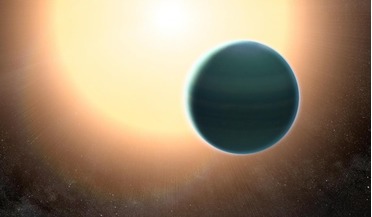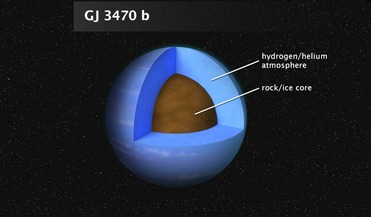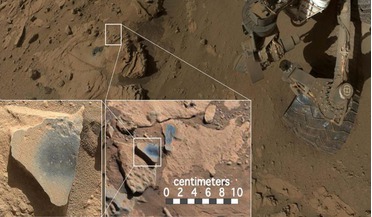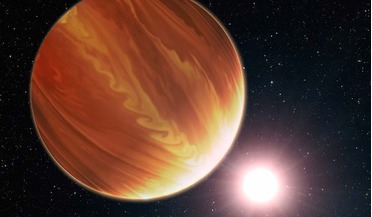 12 May 2017
Warm Neptune with primitive atmosphere discovered
12 May 2017
Warm Neptune with primitive atmosphere discovered
... of a 'Warm Neptune' have revealed that an exoplanet located approximately 430 light years from Earth, has a primitive atmosphere that is composed almost entirely of hydrogen and helium with a relatively cloudless sky. Warm Neptune’s are exoplanets...
 03 July 2019
New study reveals detailed exoplanet atmosphere
03 July 2019
New study reveals detailed exoplanet atmosphere
...massive than Jupiter—318 times Earth's mass—but has managed to accrete the primordial hydrogen/helium atmosphere that is largely "unpolluted" by heavier elements," said Björn Benneke of the University of Montreal, Canada. "We don't have anything like...
 December 2014
MAVEN and the evolution of Mars
December 2014
MAVEN and the evolution of Mars
...what would be required over a few billion years to remove an ocean’s worth of oxygen content, for example. Earth’s atmosphere is escaping at a similar rate today in outward flows of its ionised gases at high latitudes, where auroral zone acceleration...
 August 2019
Lessons from the Sun
August 2019
Lessons from the Sun
... spread to Earth’s nightside and, for hours, Earth’s geomagnetic field ‘rang’ with giant pulsations. Meanwhile the atmosphere was in upheaval. Estimates, based on changes in satellite orbits, indicated 500-800 percent increases of air density in the...
 28 June 2016
Oxides discovered on Mars hint at an oxygen-rich past
28 June 2016
Oxides discovered on Mars hint at an oxygen-rich past
... oxygen and water does not require life to be present. "It's hard to confirm whether this scenario for Martian atmospheric oxygen actually occurred," Lanza added. "But it's important to note that this idea represents a departure in our understanding...
 26 April 2016
Sulphur chemistry could be the key to clouds on many exoplanets
26 April 2016
Sulphur chemistry could be the key to clouds on many exoplanets
... with air pollution from vehicular emission (think Los Angeles, Dehli and Beijing). Past studies of exoplanet atmosphere’s have concentrated on hydrocarbons and nitriles as the main compound in photochemical hazes, especially on warm sub-Neptune type...